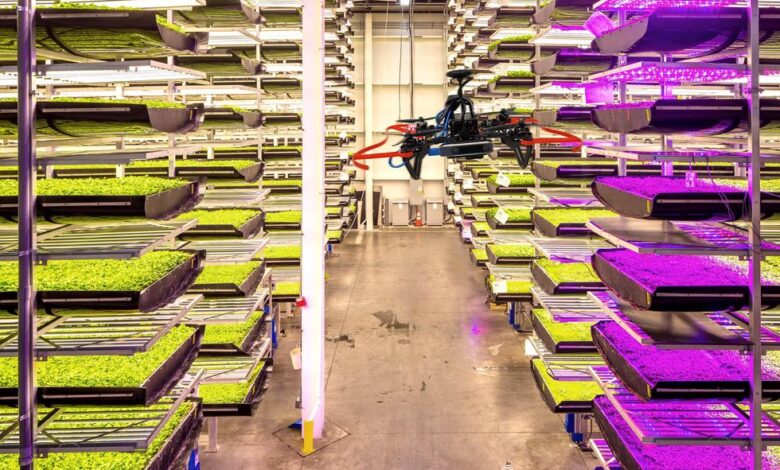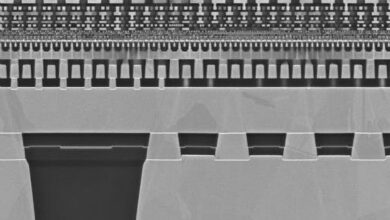Using Industrial Automation to Monitor Vertical Farms

To find out about the latest technologies being used by the agricultural industry, I virtually attended the second annual AgTech Innovation Summit, held in February in Abu Dhabi, United Arab Emirates.
The event was hosted by AeroFarms, an indoor vertical farm company based in Newark, N.J, that has an R&D facility. It has another R&D complex in Abu Dhabi, plus a commercial farm in Danville, Va.
Vertical farms use advanced technology to optimize plant growth, regardless of external conditions. Plants are stacked in perpendicular layers, maximizing the use of space.
Soilless farming techniques such as hydroponics, aquaponics, and aeroponics are the foundation of indoor farming. Plants are grown in nutrient-rich solutions.
The systems reduce water consumption and minimize the need for pesticides and herbicides. By supplying plants with the precise amount of water, nutrients, and light, indoor farming creates an ideal environment for their growth. Produce often grows faster than it does on a traditional farm.
New systems including LED grow lights provide specific wavelengths that promote photosynthesis and optimize plant growth. They allow farmers to tailor the light spectrum for different plant species, growth stages, and desired characteristics.
Cutting-edge automation systems now monitor and control environmental factors such as temperature, humidity, carbon dioxide levels, and nutrient delivery—ensuring optimal conditions that minimize waste.
The adoption of artificial intelligence and machine learning algorithms now allow analysis of vast amounts of data collected from sensors to enable predictive analytics. Farmers can make more informed decisions about managing crops, optimizing resource usage, and predicting yields.
“You need advanced automation technology to be able to monitor the entire farm, and it’s not possible to do so with people alone.” —Thierry E. Klein
I was surprised to see that Nokia Bell Labs was one of the presenters at the summit. The industrial research lab, best known for its work in telecommunications, is researching and developing advanced technologies for industrial automation and digitalization, including autonomous sensing and monitoring systems for industries.
Thierry E. Klein, president of Nokia Bell Labs Solutions Research, says vertical farming is an area that can benefit from such technology. The IEEE senior member explained that Nokia set up a collaboration agreement with AeroFarms in 2020 and developed and installed monitoring systems at the facility in Newark.
The Institute interviewed Klein to learn more about the project.
An industrial automation problem
AeroFarm and Nokia discussed how to build a system to monitor a vertical farm where leafy greens including arugula, bok choy, and kale are grown. A typical facility can produce more than 1 million kilograms of leafy greens annually. A 13,000-square-meter facility such as the AeroFarms one in Danville is so large that workers can’t physically check all the plants.
“Because the growth cycle in indoor farming is much shorter than outdoor farming, it is very important to know what’s going on at all times and not to miss anything,” Klein says. “If you fail to detect something, you will miss a huge opportunity. You might be at the end of your growth cycle, and you can’t take corrective measures in terms of the production yield, or the quality or quantity of produce.”
After Nokia Bell Labs evaluated the farm to see how it could help, Klein came to the conclusion that “there was an industrial automation opportunity,” he says. “You need advanced automation technology to be able to monitor the entire farm, and it’s not possible to do so with people alone.”
One of the important metrics the AeroFarms scientists needed, Klein says, was real-time data about when the plants’ leaves start to overlap, known as “closing the canopy.” Knowing how many days into the growth cycle the leaves have before the canopy closes is an important metric. The scientists also need to know the leaves’ color, curvature, and number—which helps them predict the yield. In addition, the farmers are looking for bare spots among the growth—which could be caused by poor nutrient flow or a bad batch of seeds.
Workers’ analysis of plant health can be subjective. One employee could look at a plant one day and determine it’s healthy, while another could look at it the next day and say it’s not, Klein says. AeroFarms wanted to remove the subjective element and standardize the process.
“We felt that we could develop the analytics models to give them that insight,” Klein says. “Of course, we are not growers, so it was important for us to learn what they were looking for.”
He says the project was an analytics problem of capturing information and data, understanding it, drawing insights, and then making intelligent decisions—and being able to do it at a scale large enough to handle the whole farm.
Analytics from drones and streaming video
The Nokia Bell Labs end-to-end solution includes autonomous drones that connect to a wireless network, as well as location technology, video streaming, computer vision, and an analytics program. All the data about the plants is displayed on a dashboard so the growers can monitor what’s going on.
“AeroFarms saw the value of our solution from an operations perspective,” Klein says. “They can optimize their production and get feedback in real time.”
AeroFarms uses sensing technologies and data science as well as machine vision and AI to test new products to bring to market.
The collaboration between AeroFarms and Nokia Bell Labs is a testament to the power of technology and innovation in advancing the field of indoor farming. By leveraging cutting-edge solutions and expertise, they are paving the way for a more sustainable and efficient type of agriculture. With their shared vision and commitment to excellence, the two are shaping the industry and driving the adoption of indoor farming practices worldwide.
IEEE Spectrum




